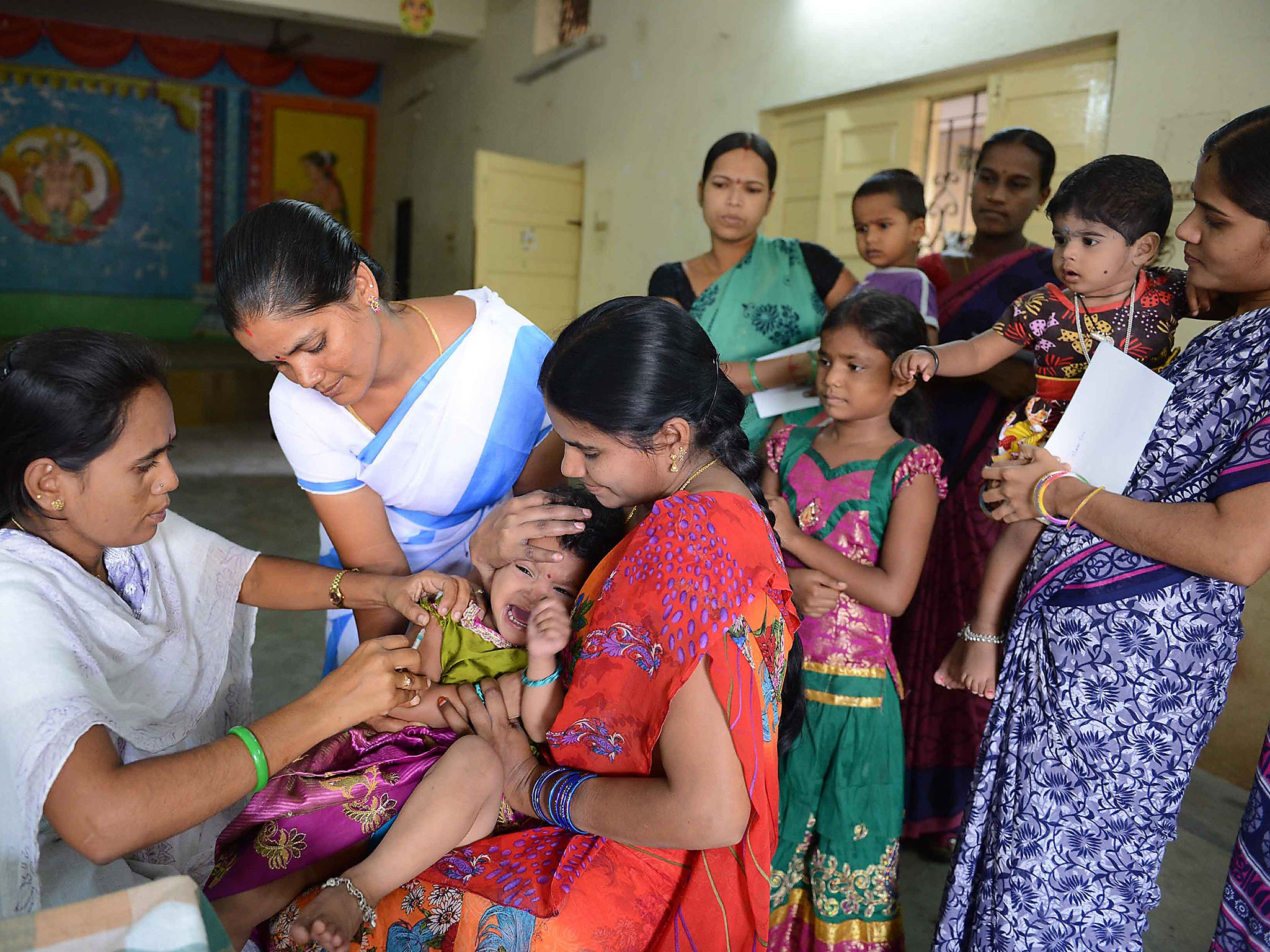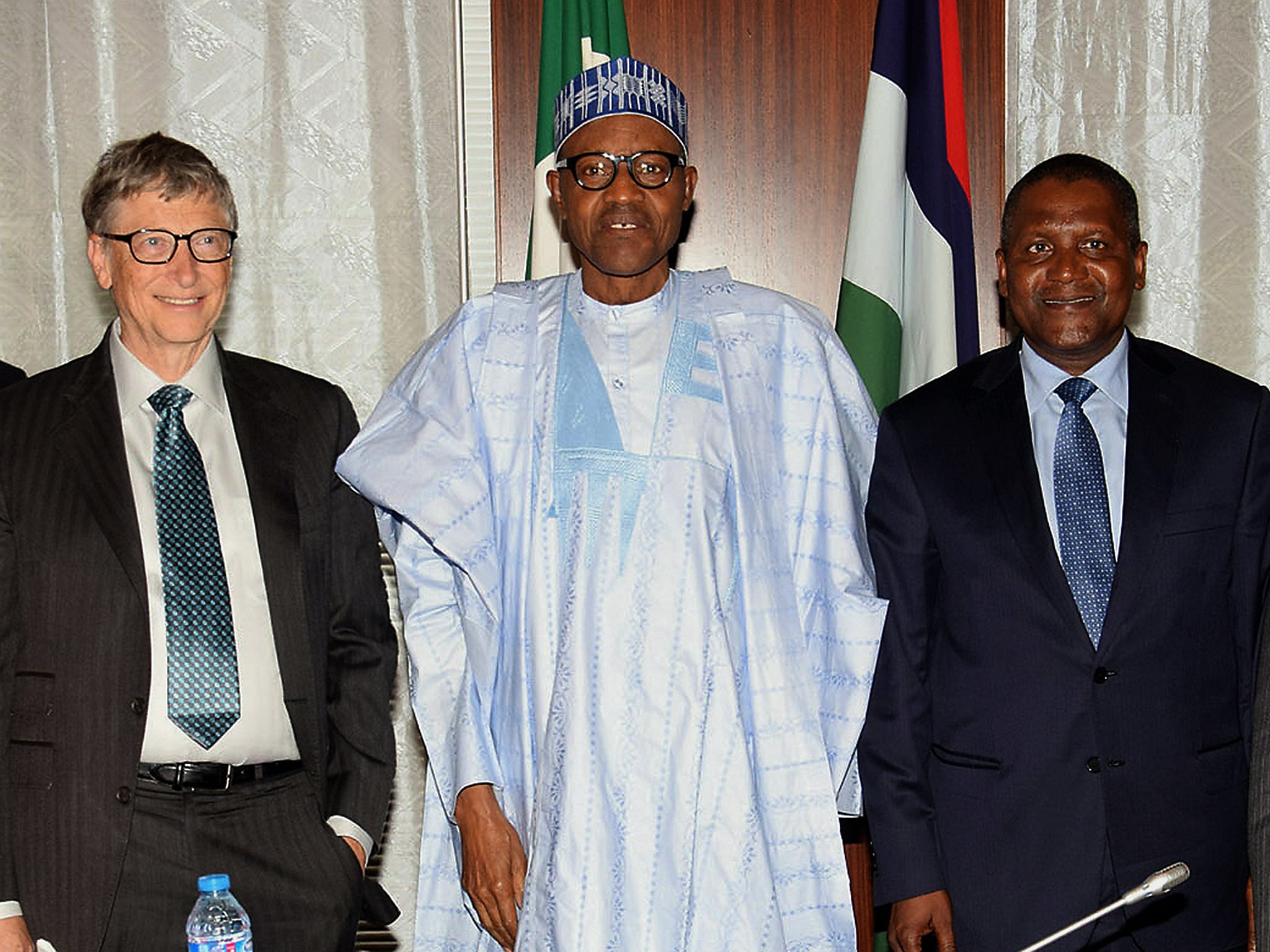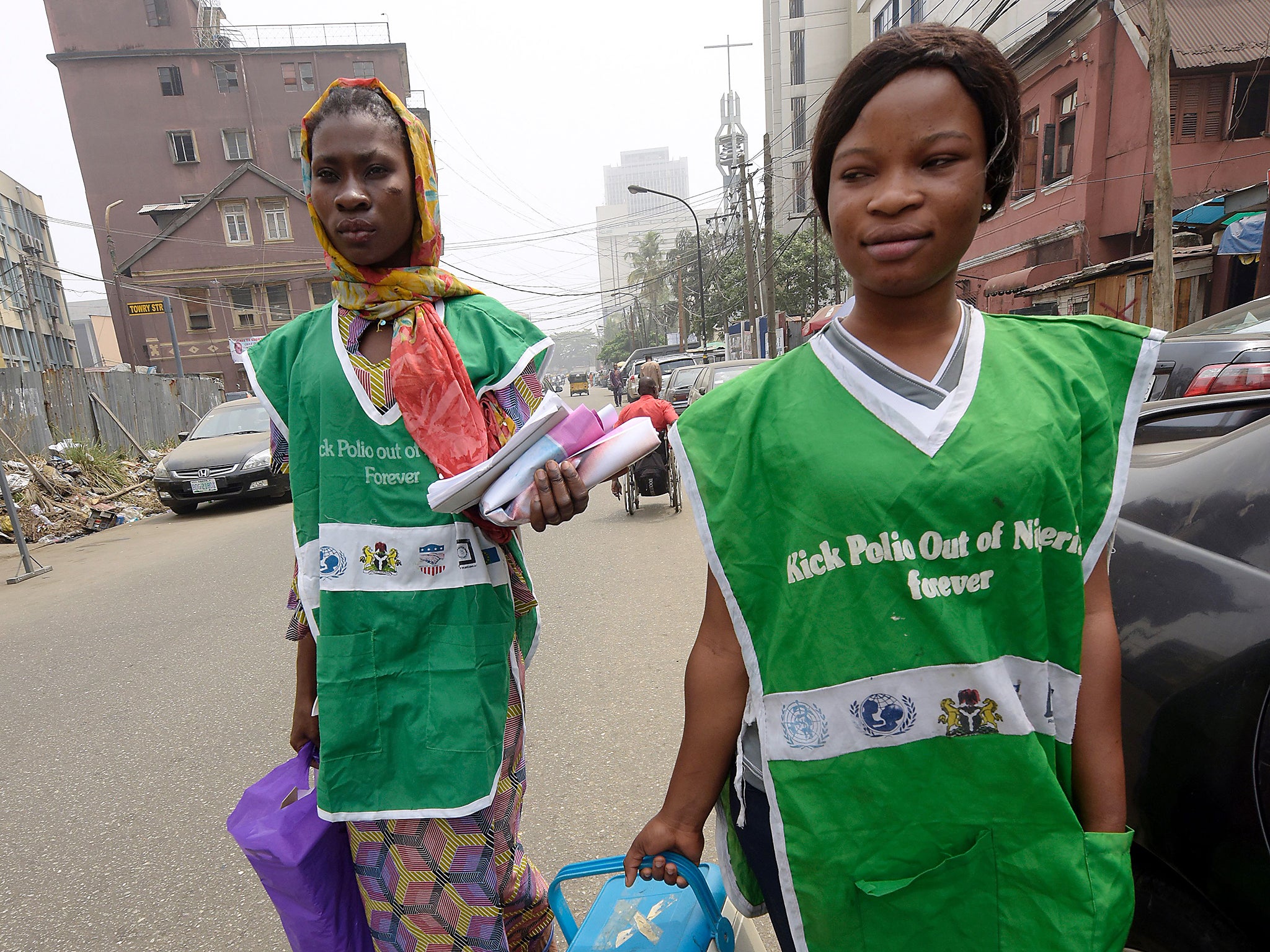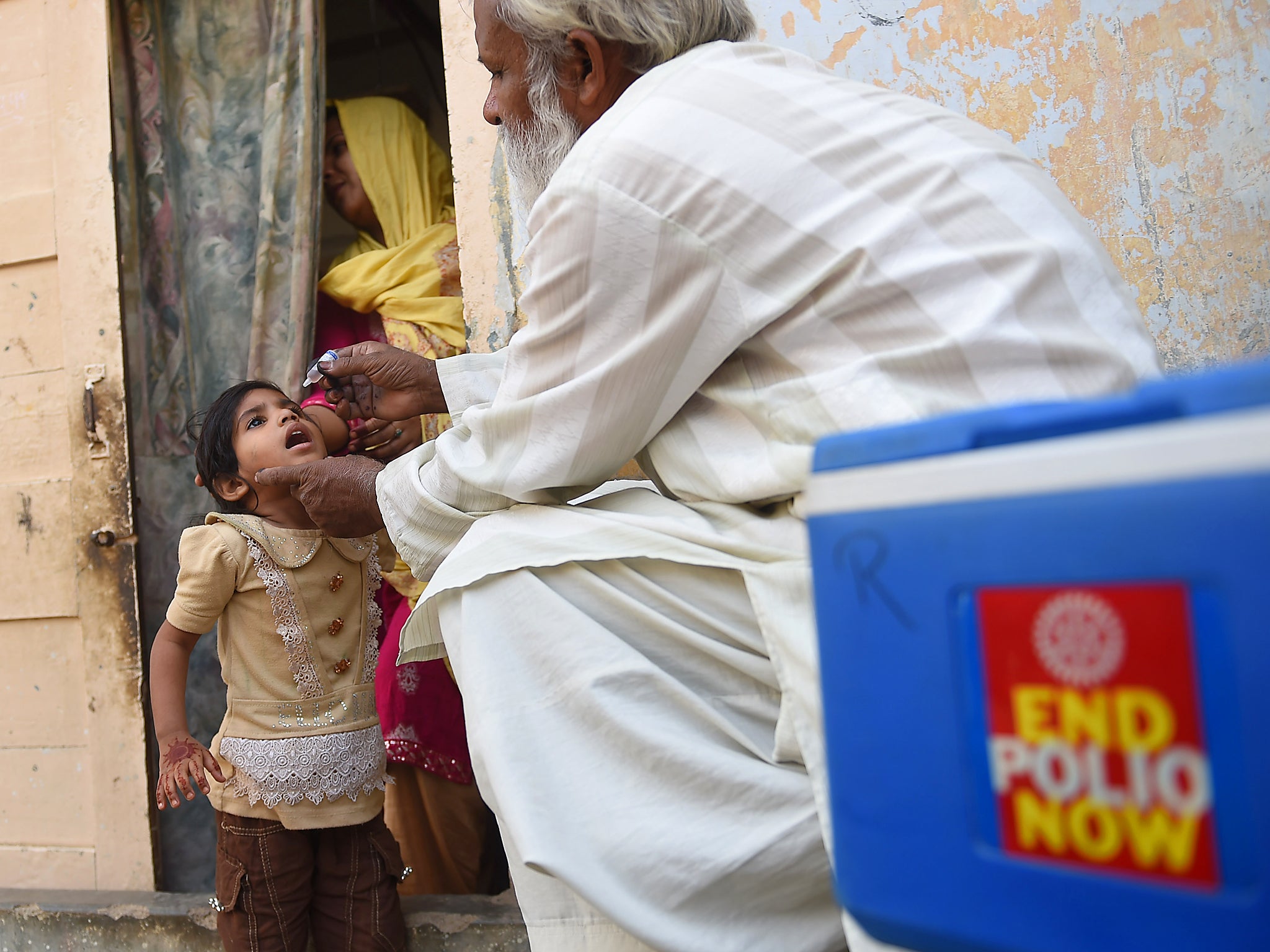Vaccine shortage threatens polio eradication
Critical vaccine shortage threatens polio eradication efforts

Your support helps us to tell the story
From reproductive rights to climate change to Big Tech, The Independent is on the ground when the story is developing. Whether it's investigating the financials of Elon Musk's pro-Trump PAC or producing our latest documentary, 'The A Word', which shines a light on the American women fighting for reproductive rights, we know how important it is to parse out the facts from the messaging.
At such a critical moment in US history, we need reporters on the ground. Your donation allows us to keep sending journalists to speak to both sides of the story.
The Independent is trusted by Americans across the entire political spectrum. And unlike many other quality news outlets, we choose not to lock Americans out of our reporting and analysis with paywalls. We believe quality journalism should be available to everyone, paid for by those who can afford it.
Your support makes all the difference.The international campaign to eradicate polio, which has vaccinated 2.5 billion people since it began in 1988 – nearly all of them children – has faced one setback after another. Its goal of wiping out the disease, which was meant to happen in 2000, is about 17 years overdue, but getting close.
The campaign has confined the disease to only three countries and hopes to reach its goal by the end of this decade. Now, however, the fight faces a new threat: a critical shortage of vaccine. The campaign, conducted by the World Health Organisation (WHO), the US Centres for Disease Control and Prevention (CDC), Unicef, Rotary International and the Bill and Melinda Gates Foundation, was expecting to receive 110 million doses of injectable polio vaccine (IPV) this year.
The two manufacturers have told the groups they can supply only about half that. “We don’t have specifics, but something is preventing the scale-up of vaccination production,” says Shanelle Hall, director of Unicef’s supply division. “We are projecting now that we won’t have the quantities we need until 2018.”

More than 100 countries are depending on those doses. Without them, planners worry the eradication campaign will lose momentum, and so many children will go unprotected that there will be fresh outbreaks. Polio vaccination strategies are complicated but come down to this: since the 1950s, there have been two vaccines, Jonas Salk’s injectable formula, which uses a killed virus to evoke an immune response, and Albert Sabin’s oral version, which relies on a weakened live virus to do the same thing.
Salk’s vaccine was adopted by the industrialised world, but when eradication efforts began elsewhere, the people behind that campaign decided to rely on the oral poliovirus vaccine, known as OPV. That was partly because the drops are less expensive to buy and administer, and because they can be given by volunteers with no medical training.
But it was also because the weakened vaccine virus performs a trick that the Salk virus cannot: it reproduces in the guts of children and then is expelled in their faeces and when it enters the environment, it can create immunity in anyone who accidentally ingests it, creating a kind of passive immunisation. That ability to reproduce and spread is a marvellous tool, one that has an unintended consequence.
The attenuated virus can mutate back to a disease-causing type, and when it reproduces, it spreads infection instead of protection. Last year, there were only 74 cases of polio in the world, and 32 were caused by a “vaccine-derived” virus. To reduce the chances of that happening, the campaign switched all of the countries using OPV from one formula to another in April.
The abandoned formula contained weakened versions of all three strains of poliovirus (dubbed type 1, 2 and 3). The new formula contained only types 1 and 3. The campaign removed type 2 because that strain has been eradicated in the wild – it has not been picked up by any surveillance mechanisms since 1999 – and because it was more likely to mutate into the disease-causing type, compared with the other two strains.

Planners acknowledged the strategy held some risk; it raised the possibility of a type 2 outbreak, if that strain of virus reappeared or if a vaccine virus still in someone’s system mutated and escaped. That risk was supposed to be nullified by a second strategy: in every country still using OPV, children were also supposed to receive one shot of the injectable vaccine, because it contains all three strains and, being a killed-virus vaccine, does not lead to reproduction.
That clever plan was working, but now IPV is running short. “Every child born since May, if they live in a country that does not have access to IPV, is not getting any immunity against the type 2 poliovirus, ” says Dr Stephen Cochi, a paediatrician who leads the CDC’s polio eradication effort. “If we get an increased supply of IPV, we can catch up to those children. Before then, we have to depend on no vaccine-derived poliovirus outbreaks occurring. ”
To cope with the shortfall, the campaign has divided countries still using OPV into tiers, depending on their risk of outbreak. The three countries that still harbour wild polio – Afghanistan, Nigeria and Pakistan – are at the top of the list to receive the most IPV.
Countries towards the bottom of the list will not receive any IPV doses until the supply situation improves; other manufacturers that bid on supplying the campaign are supposed to deliver vaccines in 2019. The two companies that fell short on deliveries are Bilthoven Biologicals BV in the Netherlands, owned by the Serum Institute of India, and Sanofi Pasteur in France.

Bilthoven Biologicals did not respond to a request for comment. Ashleigh Koss, Sanofi Pasteur’s head of media relations for North America, emailed a statement that acknowledged the shortage but did not explain it. Michel Zaffran, the WHO’s director of polio eradication, said the campaign knew there were supply difficulties before the vaccine switch in April.

The agency’s immunisation advisers “felt the benefits of removing [type 2 from the vaccine] far outweighed the risk,” he said. “But since April, there have been further reductions in supply, and 29 countries have not been able to introduce IPV at all.”
To stretch the supply, the WHO is urging countries to try “fractional doses” of the injectable, a tricky manoeuvre that involves injecting vaccine into the skin instead of into muscle. But that requires training and constitutes an off-label use, so some countries have been reluctant to do it.
Preparing to add the injectable vaccine to existing national immunisation programmes was not a small task for countries, so in addition to the epidemiological risk of possibly sparking outbreaks, planners are concerned the reputation of the eradication campaign – which already has consumed billions of dollars and occupied millions of volunteers – will suffer as countries put what they did on hold.
“I have had to personally visit several countries and explain to them why they are deprived of vaccine when other countries are getting it,” Zaffran says. “We insisted on countries introducing IPV for very good reasons, and now we are finding ourselves without enough vaccine to comply.”
Despite the setback, researchers are hopeful they can complete the mission. But the decision to switch vaccines turned out to be a bigger risk than anyone expected. To get through it, the campaign will need a little luck. And luck is never something to count on when dealing with infectious diseases.
© Newsweek
Join our commenting forum
Join thought-provoking conversations, follow other Independent readers and see their replies
Comments